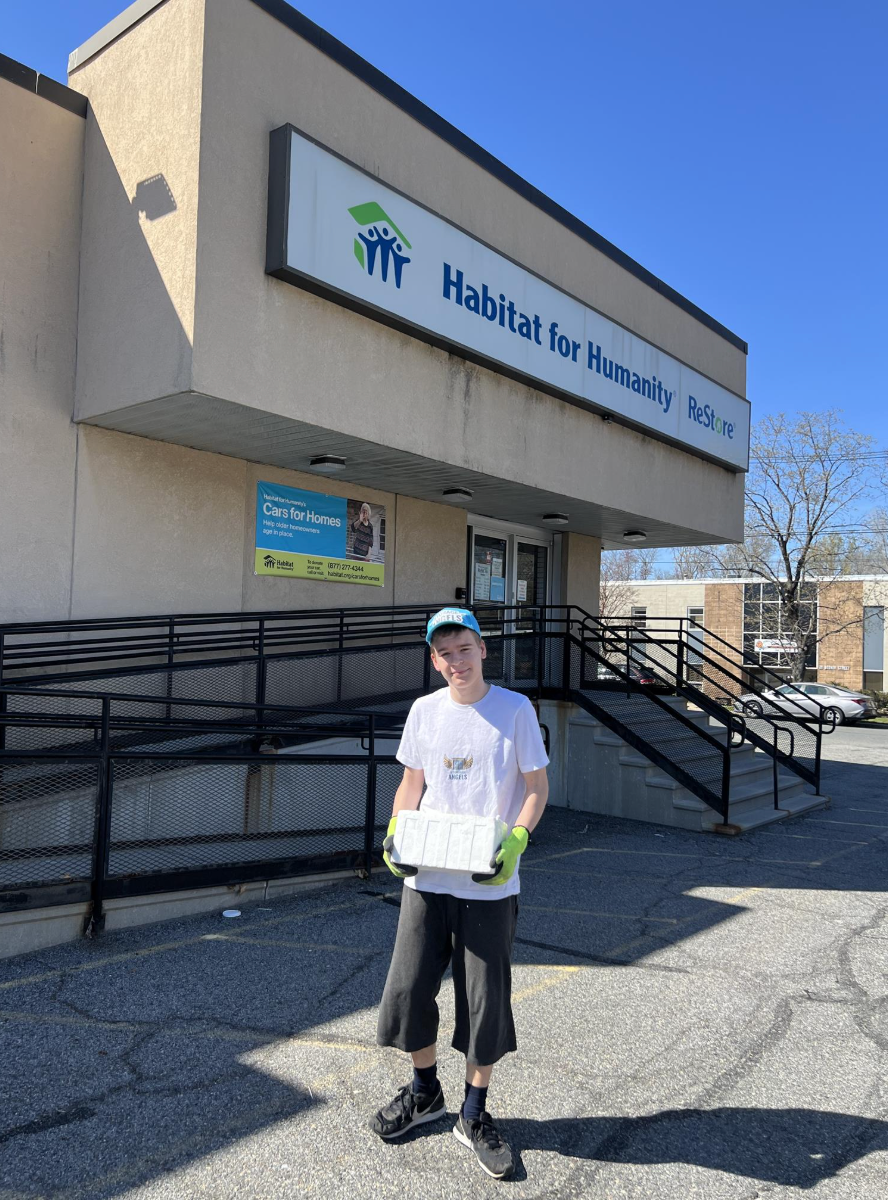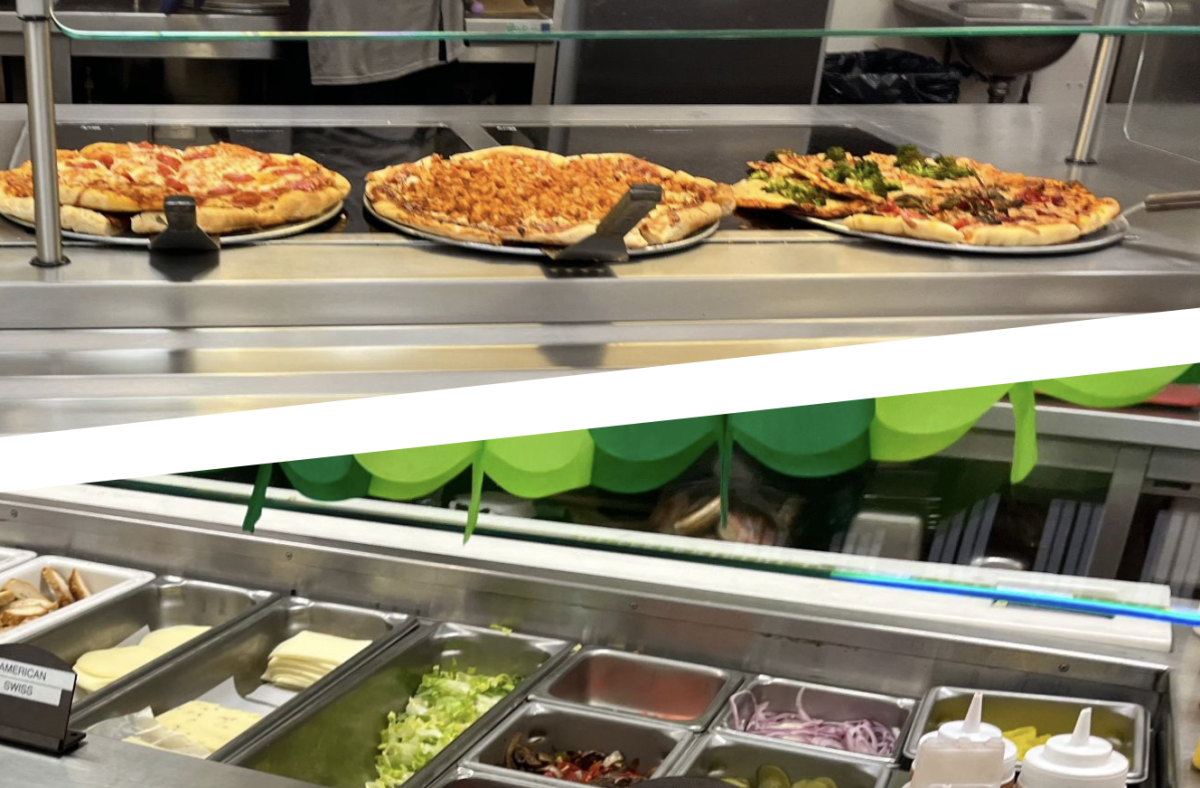At the forefront of today’s youth lies a problem as critical as it is overlooked: a lexical epidemic, precisely one concerning the word like.
The word is found everywhere; from dinner table conversations to critical history presentations; many find it difficult to keep themselves from constantly using this ever-so-persistent four-letter word. Now more than ever, like has become a critical component of the English language and communication as modern society knows it to this day.
As this word continues to entrench itself in the average American’s vocabulary, however, perhaps we should stop to ask ourselves: why exactly do we say like so much? Like, what’s the big deal?
In order to understand how like has evolved to its present state, we must first wind the tape back to as early as the 14th century.
According to Merriam-Webster, the word like has existed and been featured in various works of 14th, 15th, and 16th century “serious literature.” During this time, it was used mostly as a conjunction, specifically as an alternative to the word as.
In the 17th and 18th centuries, the word began to trickle into the spoken language, as Alexandra D’Arcy demonstrates in her book, “Discourse-Pragmatic Variation in Context: 800 Years of Like,” where records from a trial in in 1784 featured a man using like to describe visual details pertaining to the case.
However, the usage of the word like has most famously been associated with the so-called “valley girls”—the stereotypical teenage, upper-class white girls who dominated malls and beaches in the 1980s and were recognized most distinctly for the way they spoke: valley speak.
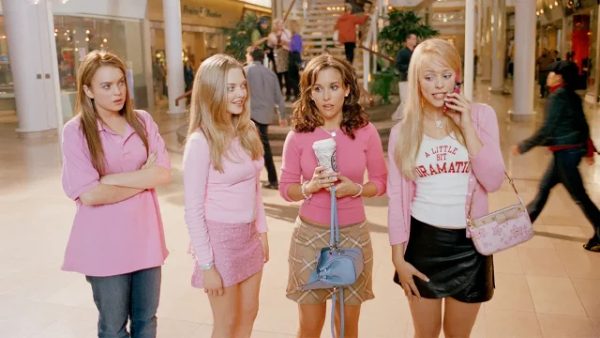
The popular 80’s song “Valley Girl” by Frank and Moon Zappa is often credited for contributing to the word’s big break into the youth audience, which was technically a parody made to mock just that—the valley girls. The song charted No.32 on Billboard and gained mass traction everywhere in America, spurring iconic trends all across American television and entertainment. From Clueless to Mean Girls, we can thank these artists for giving us the classic 90’s favorites we all know and love.
In retrospect, it isn’t necessarily surprising that the word like has been around us for so long. After all, like is among some of the most versatile English words ever known and boasts an expansive assortment of different meanings. Of this list, there are six definitions that have been present throughout history far longer than most: like as a noun, verb, preposition, adjective, conjunction and colloquial adverb.
You may recognize some of these uses of like in your everyday speech and writing.
Like as a verb: “I like to play piano.”
Like as a preposition: “I want to be just like him when I grow up.”
Like as a conjunction: “It seems like the two are getting along.”
Oftentimes, it is even difficult for us to distinguish how frequently we say this word, purely due to how quickly and with unconscious habit it tends to roll out of our mouths. And yet, many still take notice of the fact that they say the word like on a frequent basis themselves.
In a recent survey conducted at BCA, 49.2% of the students who responded admitted that they use like as a filler word “VERY often,” a scale that the survey defined as frequent as “every sentence or every other sentence,” while the other 47.8% of respondents acknowledged that they just “occasionally” use the word during a conversation.
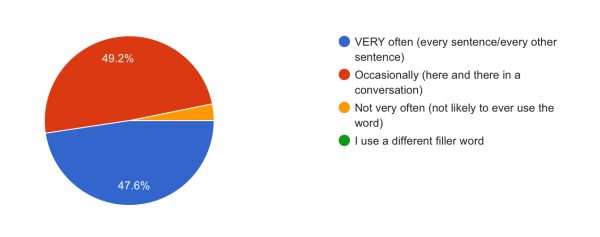
The key detail here is that these students recognize like when it is used as a filler word and not necessarily as any of the six aforementioned definitions. Believe it or not, there are four other variations of like that can be associated as a filler word.
First, like can be used as the classic filler word for pause and flow: “That was a great song. Like, I’ll definitely listen to it.” Then, another type of like called a quotative is commonly used to quote people: “He was like, ‘Stop right there,’ and I was like, ‘Me??’” Like can also be used as a hedge to approximate or lessen the impact of a statement (“That was, like, two years ago”) and as a discourse particle to emphasize a point (“She’s, like, definitely out of her mind”). According to the survey, most students tend to use like as a hedge.
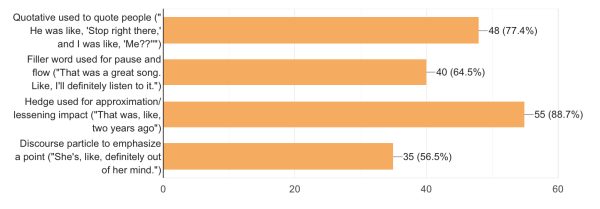
It is thus evident that, over time, like has evolved into somewhat of a staple element of communication—one that even the students at BCA cannot converse without. Unfortunately, though, as much as we have grown to use the word, the stigma surrounding it has swelled just as tremendously as well.
It is no secret that fillers are, at times, correlated with a lack of intelligence, especially in girls—which is evident in the valley girls stereotype. But, of course, such a statement is most definitely a myth.
Words like like are called discourse markers (words that break up speech into sentences) and their literal meanings are ignored to convey something about the sentence in which they appear. Some studies actually show that conscientious speakers use more of these words to make sure everyone is being heard and understood. These markers give listeners a real-time view of their thought process, helping them follow, interpret, and predict what they say.
However, some have their own opinions regarding this word. Mr. Kaplan, a theater teacher at BCA, expressed how “most of the time, we’re much more succinct without [the word like], and there’s a strength when we don’t say it. That’s why,” he added, “I encourage everybody just to be aware of it.”Despite the debate that continues, one cannot deny that like still remains an essential component to how Americans communicate to this day.
So—what do you think? Is the word like here to stay?

